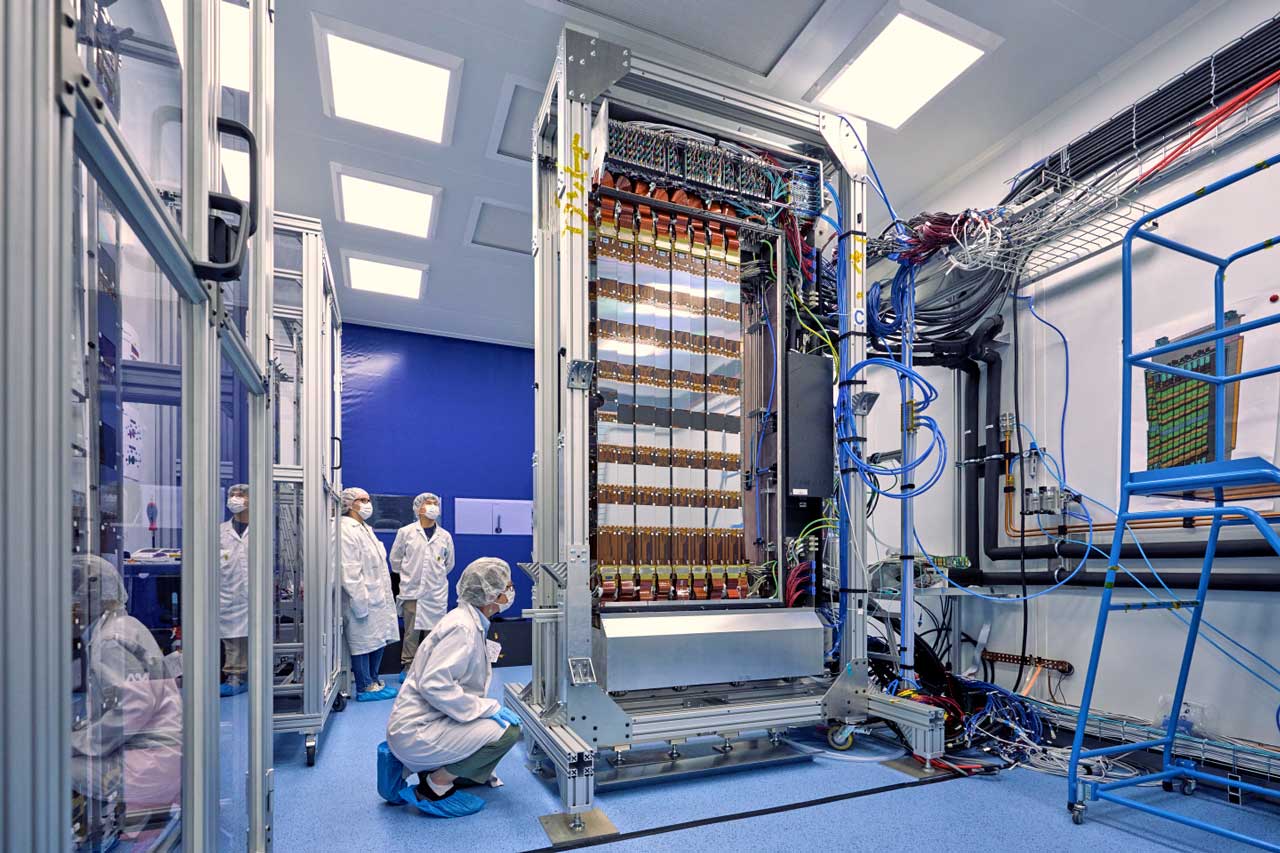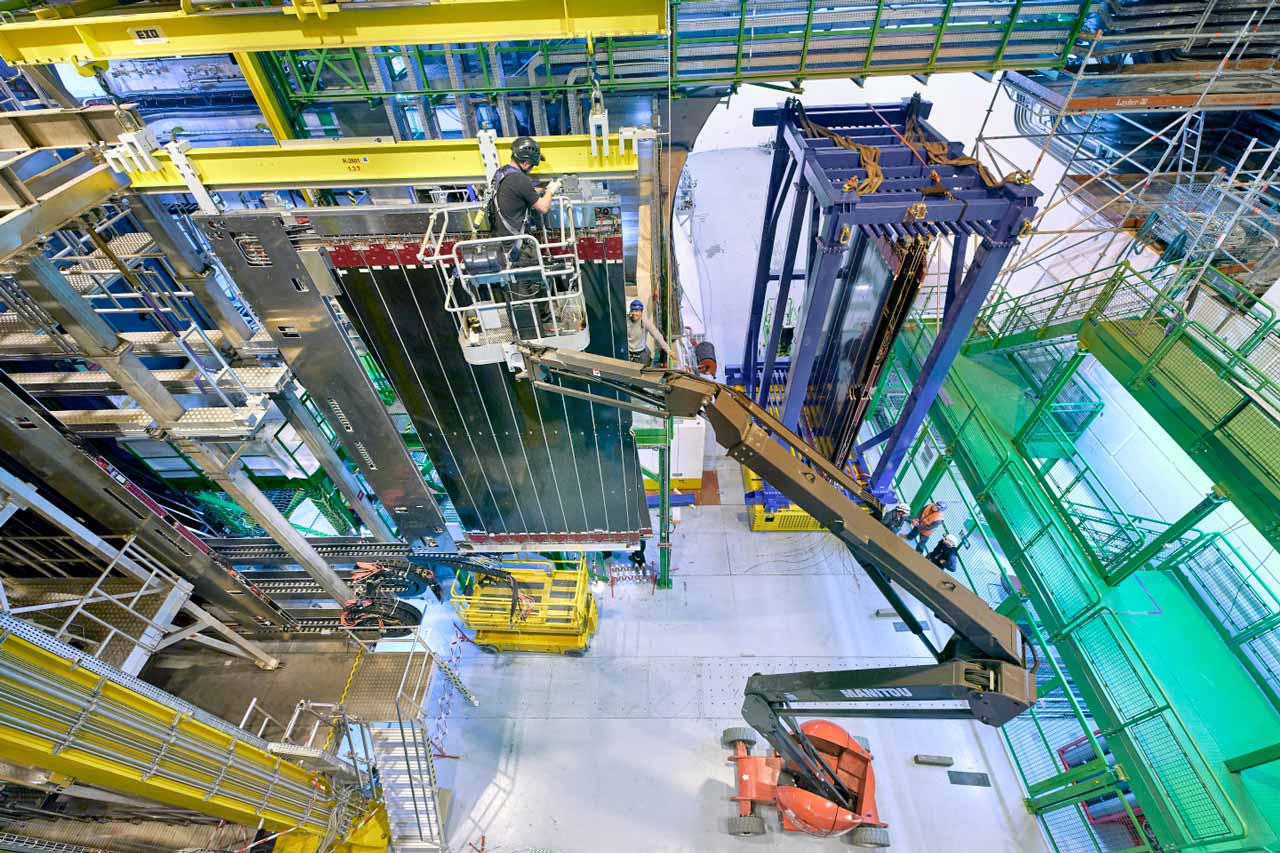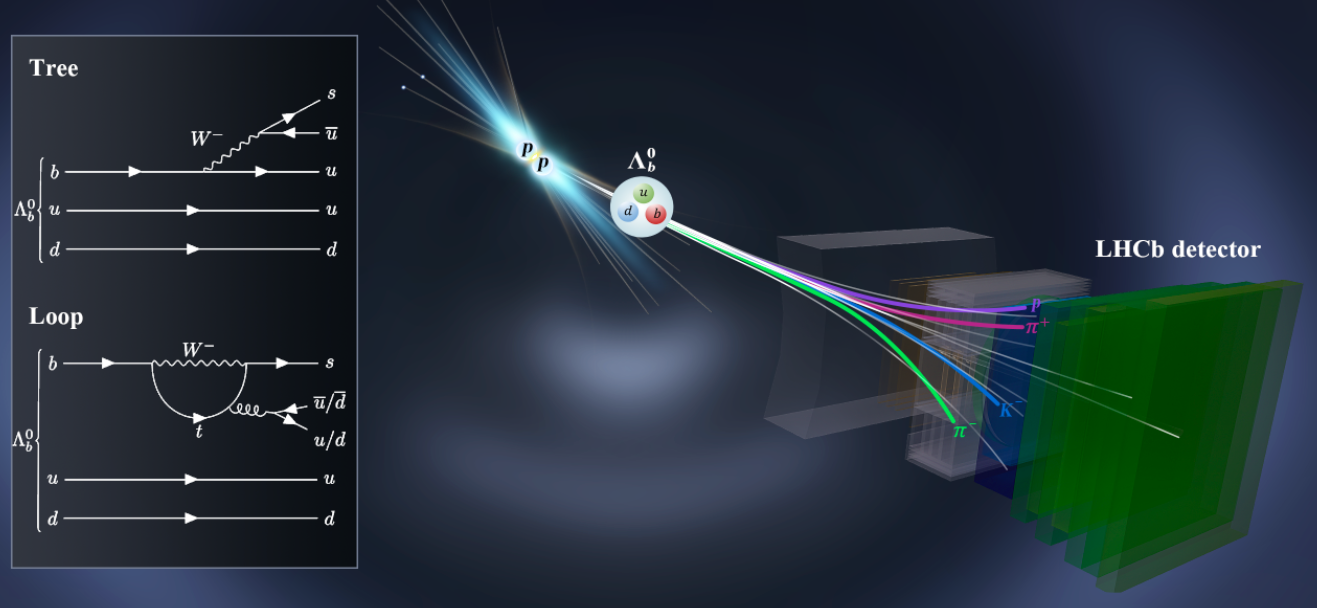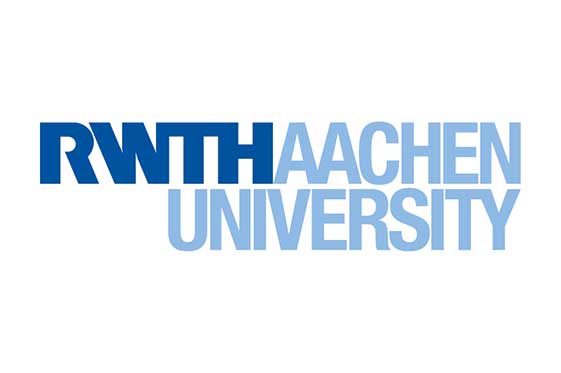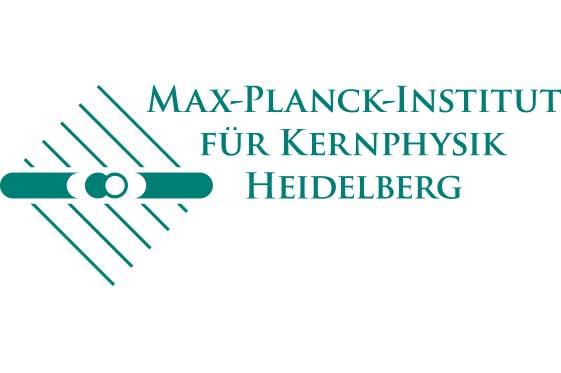
There should have been an equal amount of matter and antimatter a fraction of a second right after the Big Bang. Only matter is left today, however. What happened to the antimatter? Could we possibly owe our existence to chance? And how do investigations into the similarities and differences between particles and antiparticles shed light on previously unknown physical phenomena in the universe? These are the questions being investigated by the international team of scientists operating the LHCb experiment at the Large Hadron Collider (LHC).
The LHCb collaboration primarily focusses on collisions that produce b-quark pairs. The challenge is that although there are an extremely high number of them, they are not all automatically interesting. In order to pick out the interesting events - in other words, not to find the needle in the haystack, but the needle in the needle stack - special detector technologies and software solutions are needed.

The Detector
The LHCb detector stands out in many respects. To begin with, it is the only large detector at the LHC that is not cylindrical but arranged in vertical discs. The first "disc", or sub-detector, is located right next to the collision point. The other sub-detectors succeed each other over a length of 20 meters and provide different information (e.g. trajectory, impulse or energy of the particles) to contribute to the overall picture of the collision. This arrangement predominantly catches "forward-oriented" particles that fly towards the detector at small angles to the beam. This is where the particles that the researchers want to investigate in detail are found.
Precision is another special feature of the LHCb. The researchers are able to identify and reconstruct every single one of the thousands of particles produced in the collisions - and this despite the fact that many of them only exist for a very short amount of time before they decay again. The trick here lies in putting as little material in the way of the particles so that their trajectories can be reconstructed as accurately as possible. This is because the less detector layers there are and the less material they contain, the lower the chance that the light B particles and their decay products will be deflected.
LHCb WebsiteCurrent Research Issues
Studying B particles provides researchers with information about the universe, its history and the rules according to which it functions. The LHCb researchers have already discovered many unique features when studying their behavior. Among these are a number of new particles that are composed of several elementary particles and are created during the decay of B mesons, as well as an imbalance in the decay of D0 particles that has never been observed before.
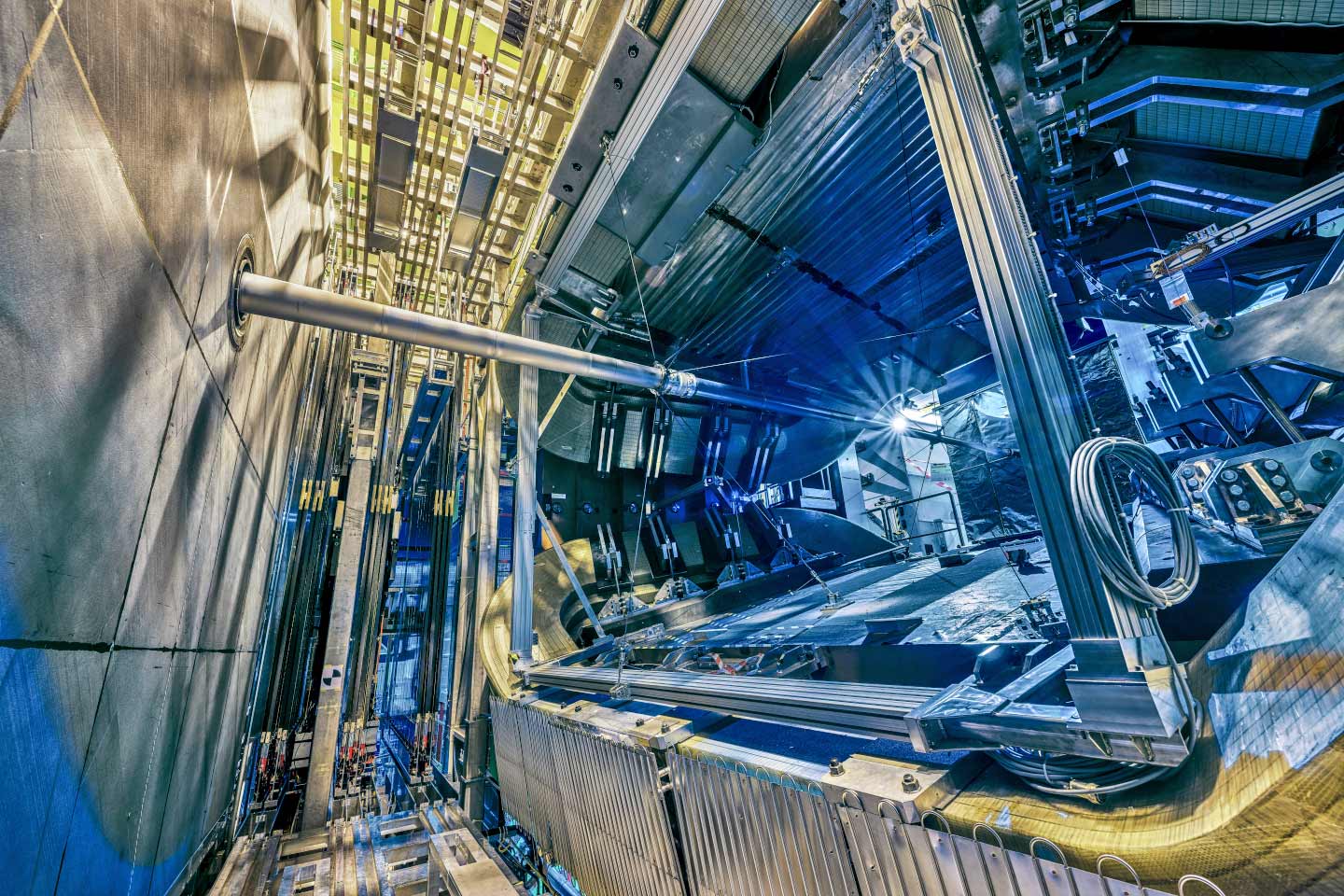
The LHCb Experiment – Profile
Dimensions:
- 10 m height, 13 m width, 21 m length
- > 5000 tons in weight
Location:
- Ferney-Voltaire, France
International Collaboration:
- 19 countries
- ~ 1500 employees
German Involvement:
- 7 institutes
- ~ 90 scientists
- > 40 doctoral candidates
- > 70 completed doctorates
Impressions from the LHCb Collaboration

BMBF Research Priority Program LHCb
German universities and non-university research institutes play a key role in the international LHCb collaboration. The Federal Ministry of Education and Research (BMBF) finances them through so-called Research Priority Programs (FSPs). The FSP LHCb includes the universities of Aachen, Bochum, Bonn, Dortmund and Heidelberg. They are supported by theorists from Siegen and Dortmund. The Max Planck Institute for Nuclear Physics in Heidelberg also takes part in LHCb.
The German LHCb groups bring their expertise to the international collaboration in the development, construction and operation of the detector. The students, graduates, technicians and professors involved in the project are primarily specialized in the forward track chambers. As such, the scientists in Heidelberg, Aachen and Dortmund play an important role in the further development and construction of the so-called SciFi tracker and its readout electronics. The University of Heidelberg leads this project in the international collaboration. The TU Dortmund and the University of Heidelberg are also spearheading the development of the unique "trigger" software, which allows all particles in a collision to be identified and tracked. This software is used to filter out the interesting collision events.
All German institutes also play a key role in analyzing the data obtained.
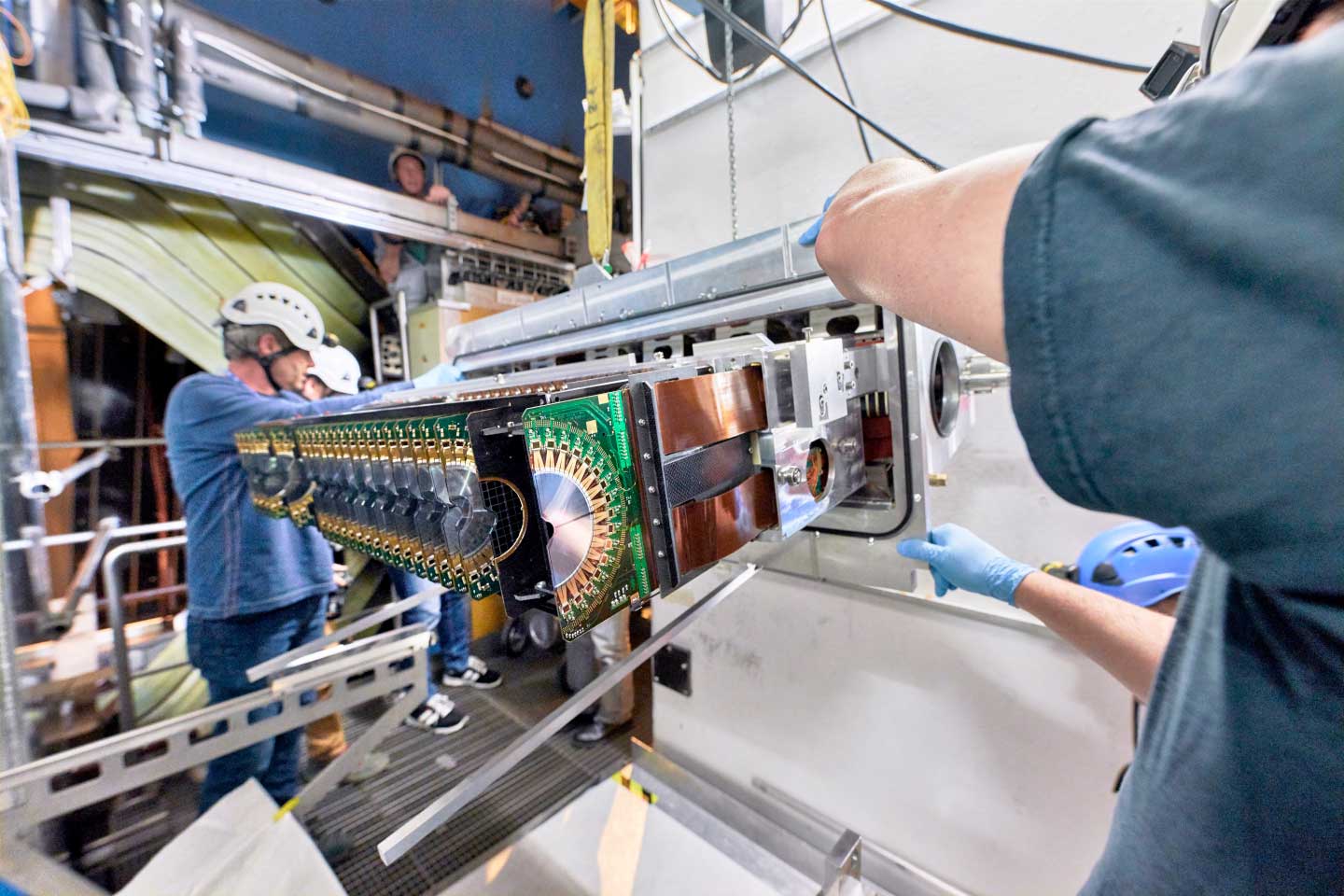
The Upgrade
The LHCb detector has recorded the world's largest data set of b-quark decays since data recording began at the LHC in 2009. This in itself already creates ideal conditions for the detailed investigation of b-particles and the search for rare processes. The numerous scientific publications in recent years also testify to this success.
Following a lengthy renovation break for the accelerator and detectors, the LHC has been operating at even higher energies and collision rates since July 2022. Many components of the LHCb detector were also replaced and upgraded to the latest standard at the same time. Now LHCb can process all 40 million events per second in software to decide as to which of them are particularly interesting.
A New Era for the LHC
A new era for the Large Hadron Collider is set to begin around 2030: the collision rate is to be increased many times over by converting it into the so-called "High-Luminosity LHC". The preparations for this are already well underway, as LHCb is to be completely replaced by a new detector. The new LHCb detector will be able not only to cope with the more difficult conditions that the High-Luminosity LHC entails, but also to utilize them optimally. In this context, the German LHCb groups are primarily involved in the development of the track detectors.
News & Events vom FSP LHCb

Speaker of the LHCb Research Priority Program
"The LHCb experiment has just been heavily remodeled and expanded. The groups involved in the FSP have been instrumental in the design, construction and commissioning of the fiber tracker and take a leading role in the Real Time Analysis project, the new fully software-based trigger of the LHCb experiment. The new detector means that we have a very exciting time of research and data analysis ahead of us."
Prof. Dr. Stephanie Hansmann-Menzemer
Physikalisches Institut
University of Heidelberg


